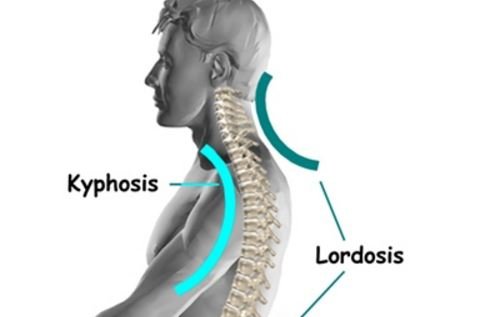Cervical lordosis is a curvature of the cervical spine or the vertebrae in the neck region. There is a normal slight curve present in the cervical vertebrae that enables comfortable movement of the neck in a healthy cervical spine. However, when there is a deviation from the normal curve, it can lead to problems. Cervical lordosis is a condition occurring due to excess curvature of the cervical spine, which can lead to pain and discomfort.
The curve in the cervical spine can show great variations and result in varying degrees of complaints. Sometimes, the normal curve straightens out making it difficult to move the neck, sometimes becomes more curved than normal, while sometimes it can be deviated to right or left along with being excessively curved.


Causes of Cervical Lordosis
Cervical lordosis can be a present during childhood or can occur during the course of life, at any age. Some of the common causes of cervical lordosis include:
- Cervical Lordosis Caused Due to Postural Changes – Poor posture, altered ways of sitting, working at the desk or lifting weight can affect the normal curvature of the cervical spine.
- Cervical Lordosis Caused Due to Congenital Conditions – Certain conditions present since birth may cause excessive lordosis of cervical spine.
- Cervical Lordosis Caused Due to Musculoskeletal Conditions – Other conditions affecting the curvature of the spine, like kyphosis, scoliosis, etc. Weakening of the bones as in osteoporosis. Disorders affecting intervertebral discs like discitis, disc herniation or prolapse. Changes in the position of the vertebrae like spondylolisthesis.
Sometimes, injury or a long standing muscle spasm results in changes in normal curvature, which can lead to either straightening of the spine or excessive lordosis.
Symptoms of Cervical Lordosis
Cervical lordosis may be visible as an arch in the cervical spine, noticed as a swayed back neck. It is often noticed that there may be extra space in between the neck and the surface on which you are lying down. Usually people experience discomfort in making neck movements and the range of motion may be restricted.
Pain is often accompanied with difficulty in turning the neck. In some long standing cases, pain may not be felt but the excess curvature can continue to limit regular activities. The muscles around the neck, shoulders and upper back are usually tensed and may be painful to touch. Muscle spasms are commonly noted and may also cause difficulty in moving the neck, raising hands or lifting weights.
If a nerve gets trapped due abnormal curvature of the spine or the tensed muscle, it can also lead to nerve related symptoms. Sometimes, numbness and tingling may be noted in the arms, hands and fingers.
While this condition and muscles spasm often subsides with proper treatment, if left unattended it can progress to cause more difficulty. If there occurs any weakness in the hands and fingers or difficulty in maintaining control, immediate medical attention may be required. Also, changes in the curvature of the spine can lead to further changes in the nearby joints, structures and cause further problems.
Treatment of Cervical Lordosis
Treatment is mainly based on the cause of cervical lordosis, along with symptomatic treatment. Pain medications, muscles relaxants, nerve tonics and nutritional supplements including vitamin D may be given. Depending on the severity of the neck pain and difficulty in neck movements due to cervical lordosis, brace or a neck collar may be advised.
Physical therapy and exercises are often helpful in muscle strengthening, improving range of motion and flexibility. Healthy lifestyle and maintaining ideal body weight is advised to relieve excessive strain on the spine.
In extreme cases of cervical lordosis, surgery may be required.

Post a comment